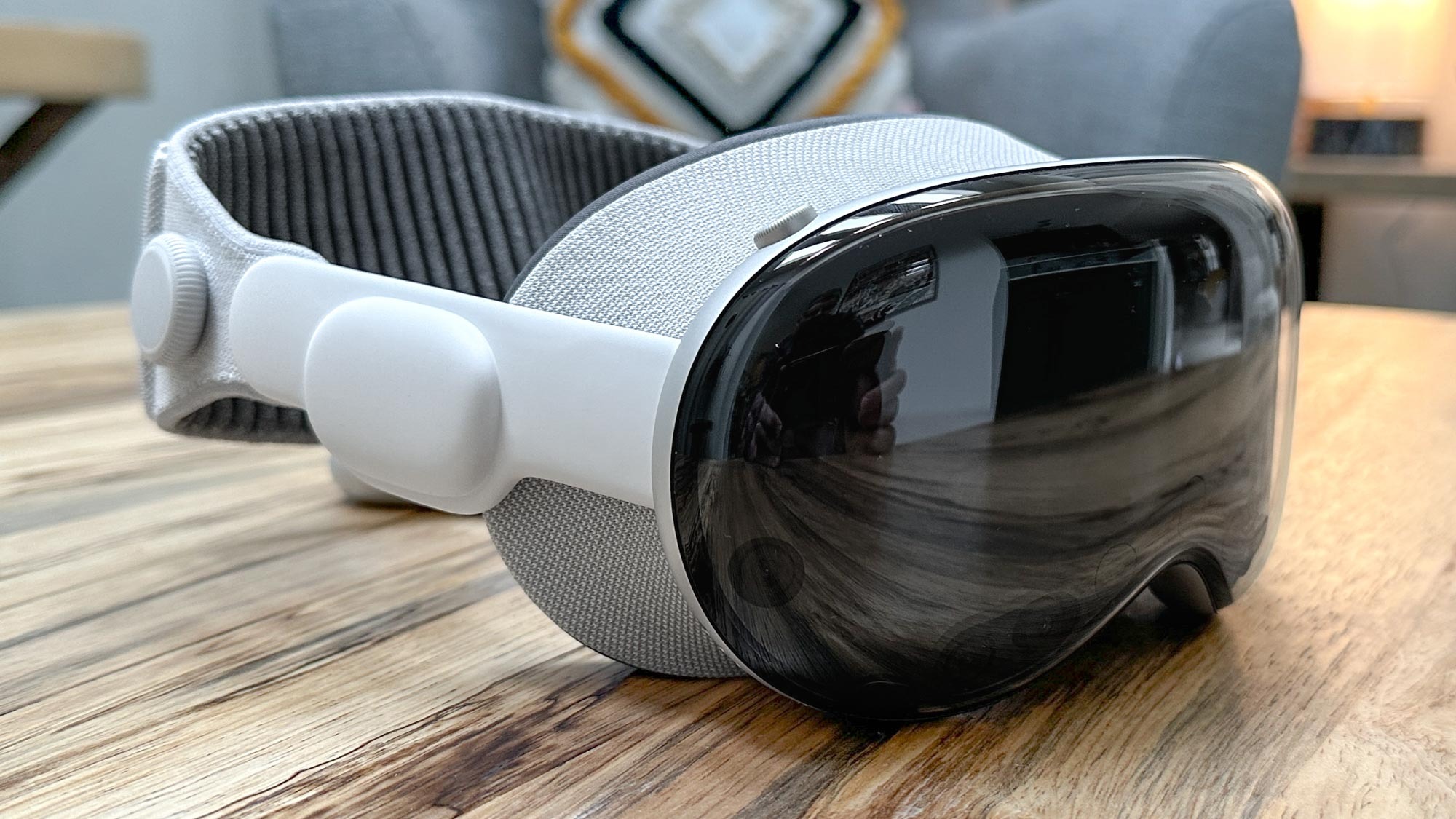Apple Vision Pro with cheaper price reportedly launching next year
2025 model could come in at $2,000 — but is that enough to make Meta sweat?

Mixed reality headsets are niche products, but the big problem for Apple Vision Pro is that it’s a niche within a niche. At its $3,499 starting price, you could buy seven Meta Quest 3 headsets at their launch MSRP, or 11 of the recently announced Quest 3S if you really wanted to make your buck go further.
Mixed reality sales have subsequently been sluggish for Apple, but the company isn’t ready to throw in the towel on the product category just yet. In the latest issue of his ‘Power On’ newsletter, Bloomberg’s Mark Gurman outlines the roadmap for Apple’s mixed reality headset over the next few years, as the company seeks to drive adoption of what it calls its spatial computers.
This could begin “as early as next year” with a “lower-end Vision headset” according to Gurman. He’s expecting a weaker processor, cheaper materials and EyeSight — the feature that shows a user’s eyes from the outside — to be stripped out completely. The aim with these cuts is to make something more affordable.
But it’s worth emphasizing that “more affordable” isn’t necessarily the same as “affordable”, and Gurman is predicting a price of $2,000 — still four times the price of the Meta Quest 3 at launch and with a far less mature ecosystem of apps to make it worth the investment. Apple is apparently hoping for double the sales of Vision Pro, but — as Gurman points out — “that’s not saying much”.
This will apparently pave the way to a true second generation of Vision Pro in 2026, though Gurman is less explicit about what will be different next time around. He only states that the headset will come with a faster chipset, though you would imagine Apple will also be seeking to address weight and general comfort concerns too.
Things can only get Meta
In 2027, along with AirPods with cameras, Apple may take on Meta again with the company reportedly “considering launching smart glasses on par with the Meta Ray-Bans”. Despite — or perhaps because of — their limited tech functionality, these have been a surprise success story for Meta and we found the second generation to be a huge improvement over the first.
This neatly sums up a problem that Apple is facing in this space. Who knows where Meta will be with this technology by 2027? The company has shown off its direction of travel with its Project Orion prototype, and if even some of the promise becomes commercially viable in the next three years, then an Apple equivalent of what’s available today could look distinctly old hat.
Sign up to get the BEST of Tom's Guide direct to your inbox.
Get instant access to breaking news, the hottest reviews, great deals and helpful tips.
But Apple has two big advantages, even with Meta’s intimidating headstart. The first is what Gurman refers to as the “stable base of revenue” at some $400 billion a year which can be ploughed into R&D (Meta made $134 billion in 2023).
The second is how Apple has made the privacy of its products a key selling point — something that Meta reputationally simply can’t match. As wearable technology feels more encompassing and invasive, that could yet be Apple’s secret weapon in the smart glasses space.
Freelance contributor Alan has been writing about tech for over a decade, covering phones, drones and everything in between. Previously Deputy Editor of tech site Alphr, his words are found all over the web and in the occasional magazine too. When not weighing up the pros and cons of the latest smartwatch, you'll probably find him tackling his ever-growing games backlog. Or, more likely, playing Spelunky for the millionth time.

